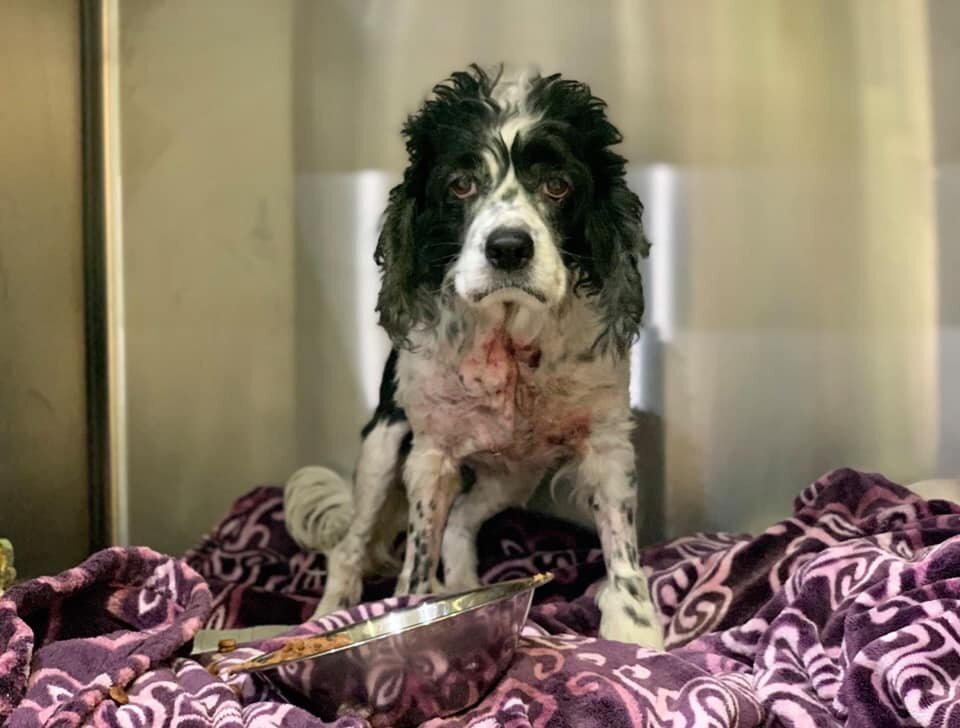What are foxtails?
Foxtails are dried dead weeds found primarily in the southwestern part of the United States. You can get these by simply neglecting lawn care in your backyard and next thing you know there are weeds and foxtails in your dog’s body.
Why are they so dangerous?
Foxtails have a sharp point at one end and then more sharp wings coming out underneath. Imagine a badminton shuttlecock, only imagine it has all super sharp points.
When a foxtail enters your dog’s body, it is going in a one way direction only (again, imagine a badminton shuttlecock, it only goes one direction because of the design). Foxtails are like little miniature pointy rocket ships that once they enter your dog’s body, they travel only in one direction. They leave behind a tract of open and raw tissue where the foxtail has traveled.
Foxtails are jerks
You know how if you get a splinter in your finger, that the inflammation from your skin eventually pushes the splinter out? Foxtails are the opposite. They not only don’t come out on their own, they travel and migrate deeper and deeper into the body.
Once a foxtail has traveled more than an inch or two into the dog’s soft tissue, you will need veterinary intervention. Generally the dog needs to be sedated so that the vet can explore and cut into the tissue deeper, following where the tract is to find the foxtail. One single foxtail can wreck havoc depending on how far into the dog’s body it travels.
If a foxtail migrates far enough into the body, it can be deadly. It can attach to a major organ and eventually a tumor will form around it and months later your dog can suddenly get very ill and perhaps the organ damage is too far gone to pursue a medical correction.
If a foxtail migrates and attaches to a major artory or vein, this is a dangerous surgery that most general vets should not be attempting to do and you should go to a board certified surgeon.
Why is it common that multiple surgeries can sometimes be required?
To find a single fox tail can take more than one exploratory surgery, depending on how far the foxtail has traveled and how deeply the vet is comfortable cutting open the soft tissue. Often when Camp Cocker Rescues a dog with fox tails, a vet will do the first fox tail surgery and then put the dog on anti-biotics and wait a couple of weeks to see if the fox tail tracts heal and close up.
Sometimes more than one surgery can be required just to find a single foxtail. When you have a dog with multiple foxtails, not only can it require multiple surgeries by a general vet, but if there are still open wounds and tract openings - you likely will end up going to a specialty hospital with a board certified surgeon and have to get a CT Scan or an MRI to find the rest of the missing foxtails.
How do I know when all of the foxtails have been removed?
This is Louise who needs more surgery.
Generally, once the last of the foxtails have been found and removed surgically, the tract openings will heal and close up. When there are still openings in the skin, you will know it’s time for another surgery because there are still foxtails inside somewhere. With each further surgery, a vet has to cut more skin open and go further and further inside of the soft tissue.
How can I prevent foxtails on my dog?
Lawn care and weed control is number one for your own property. If you take your dog hiking or walking to areas that have foxtails, it’s smart to keep your dog on a leash at all times, keep your dog’s hair cut as short as possible (so it is easier to see any foxtails that have attached) and then do a full body inspection when you get home, inspecting every inch of your dog’s skin, including between the toes, the armpits, the groin, the ears, the mouth, inside of the mouth in the cheeks, inside of the nostrils, etc.
If you really need convincing to do foxtail prevention, check out some of these videos of dogs having to go through surgery after surgery to get rid of the foxtails. Here is a dog that is from another rescue group, it took three surgeries to find all 62 foxtails.
Here is a dog that had a single foxtail enter in the body between the toes and then traveled halfway up the paw.
The worst case of foxtails we’ve ever seen!
Louise has had three surgeries so far. The first one was done at the shelter and they removed quite a bit of foxtails from all over her body, including the neck, chest, thigh and vulva. When Camp Cocker got her, our vet did another deeper exploratory surgery and pulled out a lot more foxtails and Louise had a drain in her neck area. After two weeks on ant-biotics and pain meds post op, there are still several openings on her body and she then had a third surgery by our vet. This third surgery found eight more foxtails and there are still some that the vet couldn’t touch, because the foxtails still in Louise are in her neck and embedded to major arteries. Louise now needs to go to a board certified surgeon because removing those foxtails is going to require a special skill set. We are expecting the surgeon will want to do either a CT Scan or an MRI prior to surgery to look for where the rest of the remaining foxtails are.







